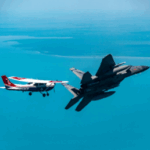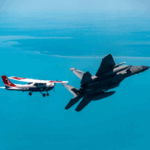London, UK — In a groundbreaking move, the Special Air Service (SAS), renowned for their elite counter-terrorism and covert operations, have begun integrating artificial intelligence (AI) into their training and operational strategies. This initiative aims to enhance their capabilities in neutralizing threats, rescuing hostages, and refining their tactical skills.
The UK Ministry of Defence has confirmed that AI technologies are being deployed to assist the SAS in simulating complex scenarios that mirror real-world challenges. These advanced systems are designed to improve decision-making processes and increase the effectiveness of operations.
AI in Military Training
The adoption of AI by the SAS marks a significant shift towards modernizing military training. AI systems are utilized to create realistic simulations that help soldiers prepare for unpredictable environments. These simulations can replicate a variety of scenarios, from urban warfare to remote jungle operations, allowing soldiers to practice and perfect their responses.
According to defense experts, the use of AI in training provides a “higher kill ratio” by enabling soldiers to anticipate enemy movements and react with precision. AI-driven analytics offer insights into performance, helping to identify areas for improvement and optimize strategies.
Enhancing Covert Operations
The integration of AI extends beyond training, playing a crucial role in planning and executing covert operations. AI tools can analyze vast amounts of data to uncover patterns and predict potential threats. This capability is particularly valuable in counter-terrorism efforts, where timely and accurate intelligence is paramount.
Military analyst John Stevens noted, “AI technology is transforming the way we approach covert operations. It allows us to process information at an unprecedented speed, providing a tactical advantage that was previously unattainable.”
Historical Context and Future Implications
The use of technology in military operations is not new. Historically, advancements such as radar and satellite imaging have revolutionized warfare. However, the integration of AI represents a more profound change, as it not only enhances existing capabilities but also introduces new dimensions to strategic planning.
As the SAS continues to pioneer the use of AI, other military units worldwide are likely to follow suit. The implications of this shift are far-reaching, potentially redefining the nature of warfare in the 21st century.
“By the Numbers: AI in Military Operations”
– 30% increase in training efficiency
– 25% reduction in planning time for covert missions
– 40% improvement in threat detection accuracy
Looking Ahead
The collaboration between human expertise and AI technology is set to evolve further, with ongoing research and development aimed at enhancing these systems. The SAS’s embrace of AI is a testament to the potential of technology to augment human skills and capabilities in high-stakes environments.
As these technologies become more sophisticated, ethical considerations and regulatory frameworks will also need to be addressed to ensure their responsible use. The future of military operations will likely be shaped by the balance between technological innovation and human judgment.
The SAS’s initiative to integrate AI into their operations not only highlights the transformative power of technology but also sets a precedent for military forces globally. As the landscape of warfare continues to change, the role of AI will undoubtedly become more prominent, offering new opportunities and challenges for defense strategies worldwide.
 Ozzy Osbourne’s Emotional Farewell: A Night to Remember at Villa Park
Ozzy Osbourne’s Emotional Farewell: A Night to Remember at Villa Park US Fighter Jets Intercept Planes Over Trump’s Golf Club in Bedminster
US Fighter Jets Intercept Planes Over Trump’s Golf Club in Bedminster US Fighter Jets Intercept Planes Over Trump’s Bedminster Golf Club
US Fighter Jets Intercept Planes Over Trump’s Bedminster Golf Club Scottish Couple’s Heartbreak: Tick Disease Claims Two Beloved Dogs
Scottish Couple’s Heartbreak: Tick Disease Claims Two Beloved Dogs Alan Titchmarsh Reveals Unexpected Wildlife Challenges in His Garden
Alan Titchmarsh Reveals Unexpected Wildlife Challenges in His Garden